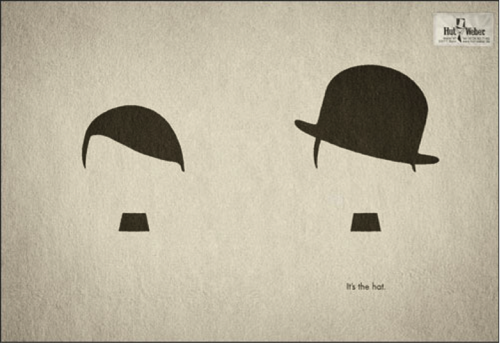The use of humor in ads and how it’s necessary in taboo advertising.
We are exposed to thousands of advertisement messages a day. It has been documented that our attention to advertisements is declining due to clutter. To remedy the situation, some marketers resorted to the use of humor in their advertisements to stand out and win our attention. Humor helps in increasing advertising performance; research shows that it can affect memorability, persuasiveness, and consumer attention. In addition to using humor, some advertisers kicked it up a notch and dared to add the shock element of the taboo, arresting our attention so completely in an instant. But keeping it long enough can be tricky.
Research shows that the effectiveness of an ad increases when humor is integrated. When the consumer sees a humorous ad, the joke in it elicits a positive attitude that gets associated with the product. When a customer is trying to recall a product’s name that he/she saw in a humorous ad, the humor should help. It all depends on how successfully executed it was. The humor has to be relevant to the product, for example, if the joke used in the ad rhymes with the product’s name it can boost our recall of that product. Otherwise, if the humor used was unrelated to the product or is too distracting, the humor content will be remembered while the information content less so (Krishnan, H., & Chakravarti, D. 2003).
The use of humor also generates favorable attitudes toward the brand and product simply by association. Research in consumer behavior proved that the positive attitude evoked by humor in an ad goes beyond the ad to the brand, through the transfer of effect (Hwiman, C., & Xinshu, Z. 2003). If the viewer enjoyed the humor in the ad, that fondness would exceed the product to the brand. The brand or product when spotted will trigger that same positive attitude elicited by that humorous content.
It is recommended, however, that humor should only be used for low involvement products. As in products that are low in risk, such as soft drinks, or clothes. These are more frequent purchases that do not cost a lot of money, hence, does not pose a risk if the consumer regretted the purchase later. Using humor with high involvement products, such as a computer or a car, can backfire. With these types of high-risk purchases, consumers spend a lot of time researching and thinking before taking out their wallet. An ad that makes them laugh does not help them decide; they want an ad that presents them with information that they need (Gulas , C. S., & Weinberger , M. G. 2006).
A taboo is a product of culture and society that embodies what is normally prohibited within a group. Taboo advertising is a strategy that deliberately violates social taboos to attract attention and increase recall of the ad. Taboo advertising has the potential of taking a wrong turn and doing more harm than good to the brand; however, if executed correctly, the benefits of the ad would exceed that of a normal ad. Despite the risk that comes with it, taboo advertising is commonly seen wrapped in humor packaging.
A study examined the level of attention and recall compared to the level of taboo used. Taboo and humor were used in various levels of extremes to 180 respondents. Findings show that in regards to attention and recall, an extreme level of taboo equals optimum achievement. Advertisers nowadays feel obliged more than ever to resort to taboos in their advertising to stand out in this unprecedented clutter of advertisements (Sabri, O. 2012).
Taboo in advertising has to be paired with humor. Otherwise, the taboo might trigger revulsion and drive consumers’ attention away. This is particularly true with advertisements of optimum levels of taboo, as they are more likely to be repressed. Humor is necessary to counter the damaging side effect of the taboo, taboo alone capture the attention but does not keep it long enough (Sabri, O. 2012). It is more like teamwork, taboo captures our attention and humor keeps it.
Using taboo in an advertisement serves as a pulling effect so strong it dims the noise of the clutter of ads. However, advertisers should be careful not to offend audiences, or risk damaging the image of the brand. Also, it should be taken into consideration that consumers’ needs and preexisting attitudes contribute to the success of the ad or lack of (Sparks, J., & Lang, A. 2009). If the consumers targeted simply have no need for the product, the ad with all its humorous glory would be a flop.
The following are real examples of humorous taboo advertising.


References:
- Gulas , C. S., & Weinberger , M. G. (2006). Humor in Advertising: A Comprehensive Analysis. Armonk, New York: M.E. Sharpe.
- Hwiman, C., & Xinshu, Z. (2003). Humour effect on memory and attitude: moderating role of product involvement. International Journal Of Advertising, 22(1), 117-144.
- Krishnan, H., & Chakravarti, D. (2003). A Process Analysis of the Effects of Humorous Advertising Executions on Brand Claims Memory. Journal Of Consumer Psychology (Lawrence Erlbaum Associates), 13(3), 230.
- Sabri, O. (2012). Taboo Advertising: Can Humor Help to Attract Attention and Enhance Recall?. Journal Of Marketing Theory & Practice, 20(4), 407-422.
- Sparks, J., & Lang, A. (2009). Examining the Influence of Emotional, Sexy, and Humorous Content on Motivated Cognitive Processing of Television Advertisements. Conference Papers — International Communication Association, 1-39.




Great piece I really learned something new today …
Short and to the point